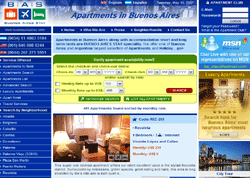Recoleta Buenos Aires
This beautiful and very stylish neighbourhood (barrio) takes its name from the Recoletos Order of Monks who settled the area. The name comes from the Latin and can be used to describe a spiritual retreat.
This barrio can no longer be considered a place for retreat. It is the most expensive district in Buenos Aires (although both Palermo and Puerto Madero are catching-up) and has been safe haven Buenos Aires' elite for many years. Recoleta is one of the quietest and safest barrios with a policeman on nearly every corner. This barrio boasts many international embassies and is home for much of the expatriate diplomatic service. With lots of green space and beautiful parks it is one of my favourite barrios and one I have often called home over the years.
Known as the Paris of South America for its French style architecture and beautiful boulevards the area is filled with art galleries, couture shopping, trendy bars and some of the finest restaurants and wine bars you will find in Buenos Aires. If you book mark this link, I will be reviewing the good eateries later this year.
During the weekend, Francia Square's visitors can enjoy of one of the largest craft fairs and bargain their way to some of the best locally designed jewellery and art-de-object I have seen anywhere in the world. Click here to see Recoleta's Buenos Aires best selection of budget to luxury apartments.
|
Some of the most important attractions are:
|
-
-
Important information links for a fantastic Buenos Aires Stay
-
Argentina
-
-
Important information links for a fantastic Buenos Aires Stay
Copyright Mainline Security Ltd. All rights reserved.

